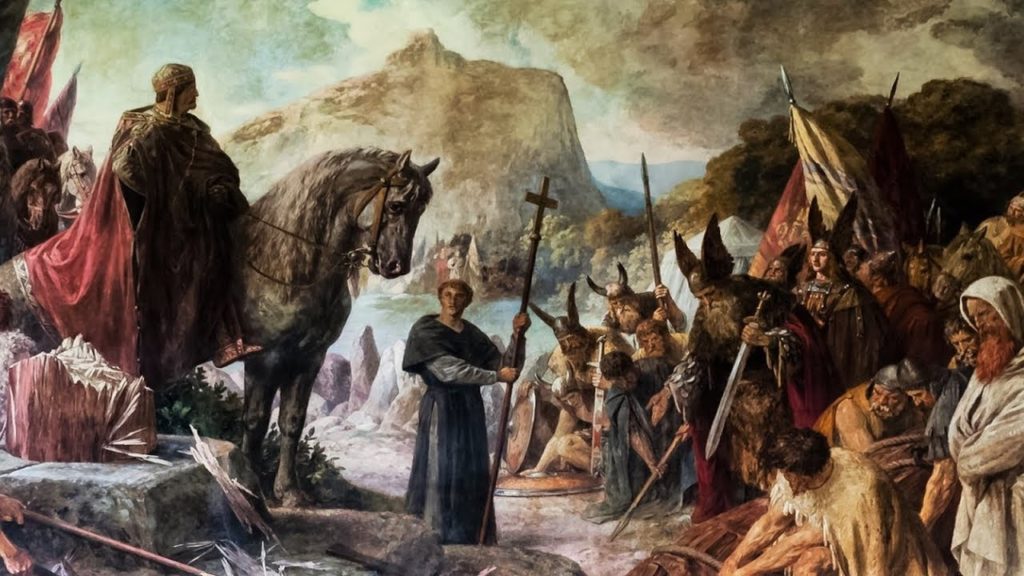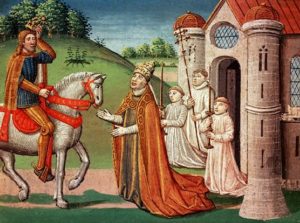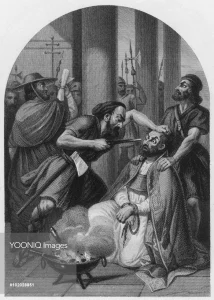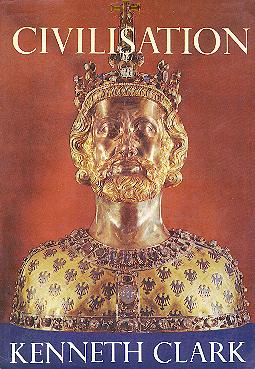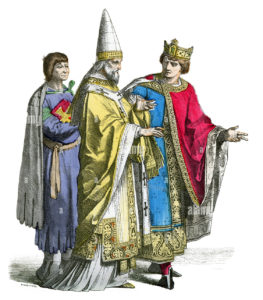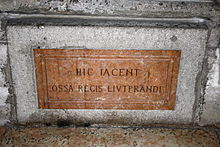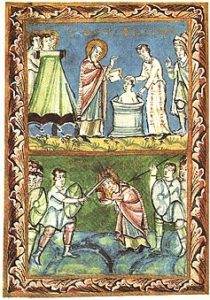– For the context of these translations click here –
Plunder and Christianisation, a trump card of Frankish government policy
While the Franks had fought in unison with the Saxons in the annihilation of the kingdom of Thuringia in 531, in 555-556 Chlothar I conducted two campaigns against them. In the first he succumbed to a significant defeat, but in the next he imposed a tribute on them. Around 629, during a devastating campaign, Chlothar II had all Saxons who lifted more than his sword killed. But when in 632-633 they helped Dagobert I against a Vendean army, and although they contributed little to the campaign, the king waived the 500-cow tribute they had been paying for over a hundred years. They were thus fully independent. But when they broke into the lower Ruhr territory in 715, Charles Martell waged a series of devastating wars against them, forcing them to pay tribute and taking them hostage.
As among the Frisians, neither among the Saxons, considered to be ‘the most pagan’ (paganissimi), did the attacks alone achieve any success. All these advances beyond the Frankish realm ‘involved something irremediably reckless’ (Schieffer). And, as among the Frisians, the clergy also soon collaborated closely with the conquerors in the subjugation of the Saxons. Both helped each other. First the country was plundered by the sword, then the common rule was consolidated by Christian ideology and ecclesiastical organisation, the conquered and ‘converted’ adapted and were economically exploited.
The Frankish kings and nobles had no more devoted collaborators than the clerics, and the clerics found no more solicitous promoters than Frankish feudalism. The military victory brought with it immediate Christianisation. Where the Frankish sword didn’t reach, like the Danes for example, there was no mission either. Hence, just as among the Frisians, so also among the Saxons their struggle for freedom was immediately transformed into a struggle against Christianity, which appeared to them as a symbol of slavery and foreign domination. Hence, both Frisians and Saxons particularly hated the clergy, destroyed churches in any uprising, expelled missionaries and not infrequently killed bishops and priests, and were suspicious a priori of any Christian preacher who appeared. He was almost always, in fact, in the service of a hostile power which imposed the yoke and acted as its introducer and stabiliser.
Now the aim was to ‘convert’ at once as many people as possible: a whole tribe, a whole people. Massive success was sought beforehand, as was always the case later on in the Middle Ages. Thus, in the 8th century, more and more attempts were made to open the way for Christianity at any cost and to baptise the vanquished by force. ‘This connection of war and Christianity heralded the new form of cooperation between Church and State’ (Steinbach).
Christianisation was now on the heels of the campaign of subjugation, with the undeniable aim of binding the subjugated more strongly to the kingdom: ‘A trump card of the Frankish governmental policy, which responded to the conviction that the evangelical doctrine of compulsory obedience was capable of subduing obstinate rebellion even more than the power of the sword’ (Naegle).
Among the Saxons, among whom the enslaved peasants were extraordinarily numerous, the lower working classes partly put up violent resistance to Frankish expansion and forced conversion. For them it led to a kind of slavery. The Saxon nobility, on the other hand, whose dominance was threatened by free and slave in a class struggle that was becoming more and more acute, was much more open to the new religion, which was in fact feudal, and more willing to compromise (the situation was at least very similar in Thuringia). The Saxon nobility very early on favoured missionary action to secure its dominance over the lower classes and to strengthen their position, a characteristic behaviour throughout the war. In 782 and 898 the same nobility openly handed over their less trustworthy peasants to the Franks. They also immediately made numerous donations to the Church. On the other hand, the lower classes (plebeium vulgus) still rejected Christianity in the second half of the 9th century.
The people maintained pagan sacrifices and customs and hated Christian parish priests. Only Charles’ sword achieved the goal. Crushings and uprisings followed one after the other, provoking campaign after campaign. It took a war of more than thirty years, which devastated the country continually, decimated the population, and soon assumed the character of a war of religion, to spread the good news and the kingdom of god a little further into the world; to lead the Saxons ‘to the one true God, to convince them that there was something greater than fighting and victory, than death on the battlefield and pleasures in Valhalla’ (Bertram).
It would have been the bloodiest and longest war waged by the Franks, according to Charles’ confidant Einhard in his Vita Caroli Magni, the first hagiography of a ruler of the Middle Ages. And this ‘iron-tongued preaching’—to use a 9th-century expression—with which the country of Saxony was converted, became a kind of model for all Christian missionary practice in the Middle Ages. And we have to think that only Frankish accounts of the Saxon wars exist, so the clerical chroniclers distorted the mission of blood and fire until it was passed off as a serene and entirely peaceful work of conversion.
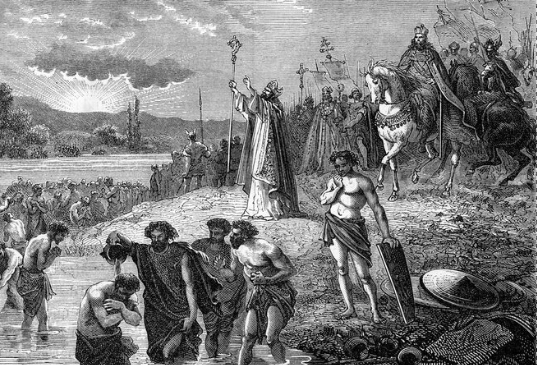
Editor’s Note: This engraving of Charlemagne having the Saxons peacefully baptised is what pious Christians, ignorant of real history, believe.
